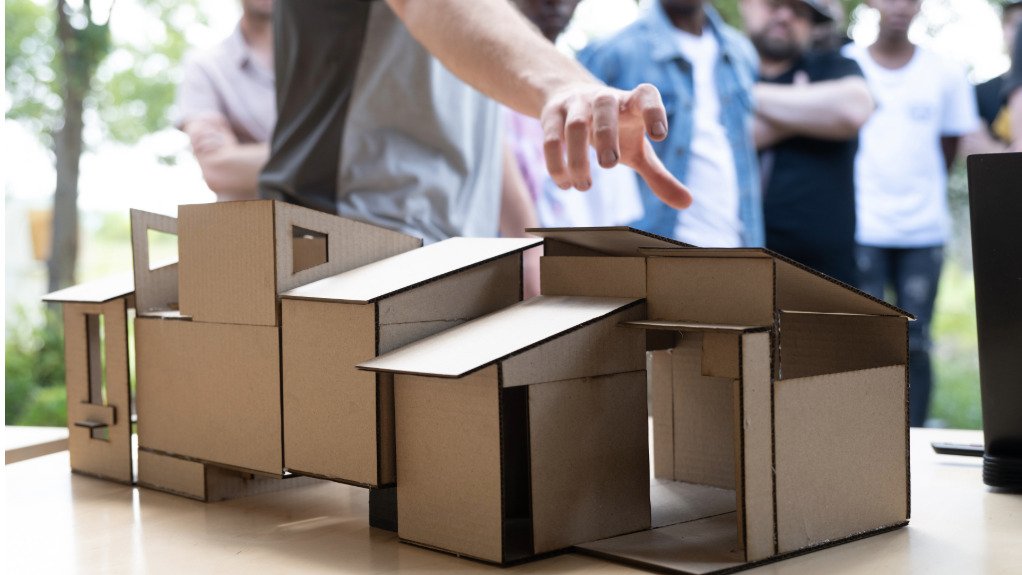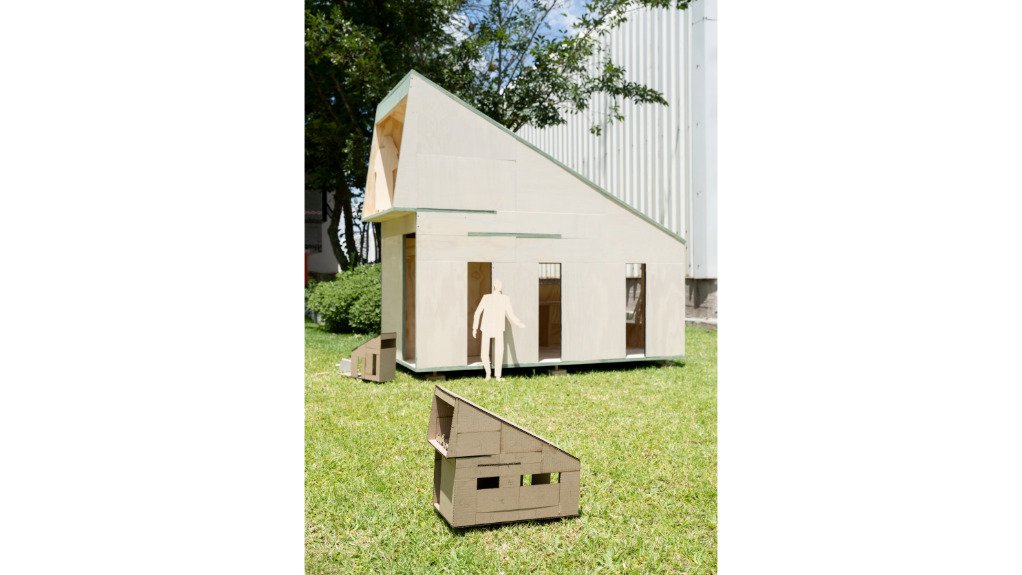Wood pushed as viable construction material



PROMOTING ALTERNATIVES The use of engineered wood as an alternative to concrete and steel in the construction sector is being promoted by the University of Pretoria
BUILT TO SCALE Learners at the RAW Modular Experience make a modular structure using wood as a medium
Engineered wood has emerged as a viable alternative to concrete and steel in the construction industry, owing to its low-carbon footprint and technical performance as a structural material, says tertiary education institution University of Pretoria’s (UP’s) Graduate School of Technology Management senior lecturer Dr Schalk Grobbelaar.
However, the adoption of this solution in the industry is still notably low, he says.
“With growing concerns over the environmental impact of construction activities, the construction industry is witnessing a shift towards green building practices in many countries.”
Generally, in South Africa, people have negative attitudes towards timber, which prevent them from adopting it. This is changing, however, as more people experience first-hand the benefits of timber construction.
“A key aspect of this transition involves re-evaluating construction materials, as their efficiency directly influences energy consumption and greenhouse-gas (GHG) emissions,” Grobbelaar adds, pointing out that this has been addressed in a paper published by himself and his colleague, UP PhD student Ferdinand Senam Hassan.
The paper, titled ‘Adoption of Engineered Wood Products (EWPs) in the Building Construction Industry – A Conceptual Model’, was released late last year.
Grobbelaar explains the paper provides a conceptual framework for adopting EWPs in the construction industry by “incorporating two common theoretical frameworks used to study the diffusion and adoption of innovations: the diffusion of innovations theory and the theory of planned behaviour”.
The theory of planned behaviour is a theoretical framework to explain the likelihood of individuals developing or adopting a specific behaviour.
Numerous studies have shown that timber is not only renewable, but is also the best performer across most environmental impact factors when compared to building material alternatives such as steel and concrete, with particularly good performance in terms of GHG emissions.
This is according to a 2020 paper ‘South African log resource availability and potential environmental impact of timber construction’ by Stellenbosch University Department of Forest and Wood Science researchers Dr Phillip Crafford and Professor Brand Wessels.
The paper states that basic modelling analyses show that, should the market share of wood-based buildings increase to 20% of new constructions, the embodied energy and global warming potential of the residential building sector could decrease by 4.9%.
Further, should all new constructions be wood based, the total embodied energy and global warming potential of the residential building sector could decrease by up to 30%.
Enough Wood to Cope
“We have sufficient resources for the short term and can implement medium- and long-term strategies to increase the timber supply in South Africa,” says Grobbelaar.
He also suggests that, apart from local supply, neighbouring countries, such as Swaziland, Zimbabwe and Mozambique, have the potential to increase short-rotation plantations substantially, which South Africa could use as a supply chain.
“Mozambique has plantations that can supply wood, but they don’t yet have adequate processing facilities, which is a quicker problem to solve than establishing new plantations.”
Although mostly pine trees are used to manufacture construction material locally, eucalyptus is also used, and both species are grown in large numbers in South Africa.
Grobbelaar says it has been shown that, by using wood resources currently exported as chips and planting trees in areas that have been earmarked for afforestation, it will be possible – in the long term – to sustain a future residential building market where all constructions are wood based.
However, in the short term, imported wood-building components might be required if there is rapid growth in the wood-based building market for residential development.
RAW Talent
Grobbelaar says a recently instituted programme, the RAW Modular Experience, forms part of the Protobuilding programme being supported by UP, which aims to nurture a positive mindset towards using wood as a construction medium.
“The idea of the RAW Modular Experience is to provide students from various institutes and disciplines, especially those related to construction, with practical design and building experience,” he explains.
Hopefully, this will also increase their knowledge about modular wood construction, consequently enabling them to design and build using timber, positively influence their attitudes and, subsequently, broaden social norms, towards the medium.
The idea is to illustrate that it is easy and fun to work with timber while ensuring that students look for opportunities to increase the sustainability of buildings – through not only the choice of material, but also by being as efficient as possible when using the material.
“More than 100 students have attended either the RAW Modular Experience or the courses by architect firm Earthworld Architects,” comments Grobbelaar, adding that the courses presented by the two entities were similar.
Students and developers are developing short-stay units that will be constructed at RAW Modular’s site in Boschkop, Pretoria.
“The idea is that these short-stay units will be used to accommodate future intakes of students attending the course, offering a multifaceted purpose,” he concludes.
Article Enquiry
Email Article
Save Article
Feedback
To advertise email advertising@creamermedia.co.za or click here
Comments
Press Office
Announcements
What's On
Subscribe to improve your user experience...
Option 1 (equivalent of R125 a month):
Receive a weekly copy of Creamer Media's Engineering News & Mining Weekly magazine
(print copy for those in South Africa and e-magazine for those outside of South Africa)
Receive daily email newsletters
Access to full search results
Access archive of magazine back copies
Access to Projects in Progress
Access to ONE Research Report of your choice in PDF format
Option 2 (equivalent of R375 a month):
All benefits from Option 1
PLUS
Access to Creamer Media's Research Channel Africa for ALL Research Reports, in PDF format, on various industrial and mining sectors
including Electricity; Water; Energy Transition; Hydrogen; Roads, Rail and Ports; Coal; Gold; Platinum; Battery Metals; etc.
Already a subscriber?
Forgotten your password?
Receive weekly copy of Creamer Media's Engineering News & Mining Weekly magazine (print copy for those in South Africa and e-magazine for those outside of South Africa)
➕
Recieve daily email newsletters
➕
Access to full search results
➕
Access archive of magazine back copies
➕
Access to Projects in Progress
➕
Access to ONE Research Report of your choice in PDF format
RESEARCH CHANNEL AFRICA
R4500 (equivalent of R375 a month)
SUBSCRIBEAll benefits from Option 1
➕
Access to Creamer Media's Research Channel Africa for ALL Research Reports on various industrial and mining sectors, in PDF format, including on:
Electricity
➕
Water
➕
Energy Transition
➕
Hydrogen
➕
Roads, Rail and Ports
➕
Coal
➕
Gold
➕
Platinum
➕
Battery Metals
➕
etc.
Receive all benefits from Option 1 or Option 2 delivered to numerous people at your company
➕
Multiple User names and Passwords for simultaneous log-ins
➕
Intranet integration access to all in your organisation
















